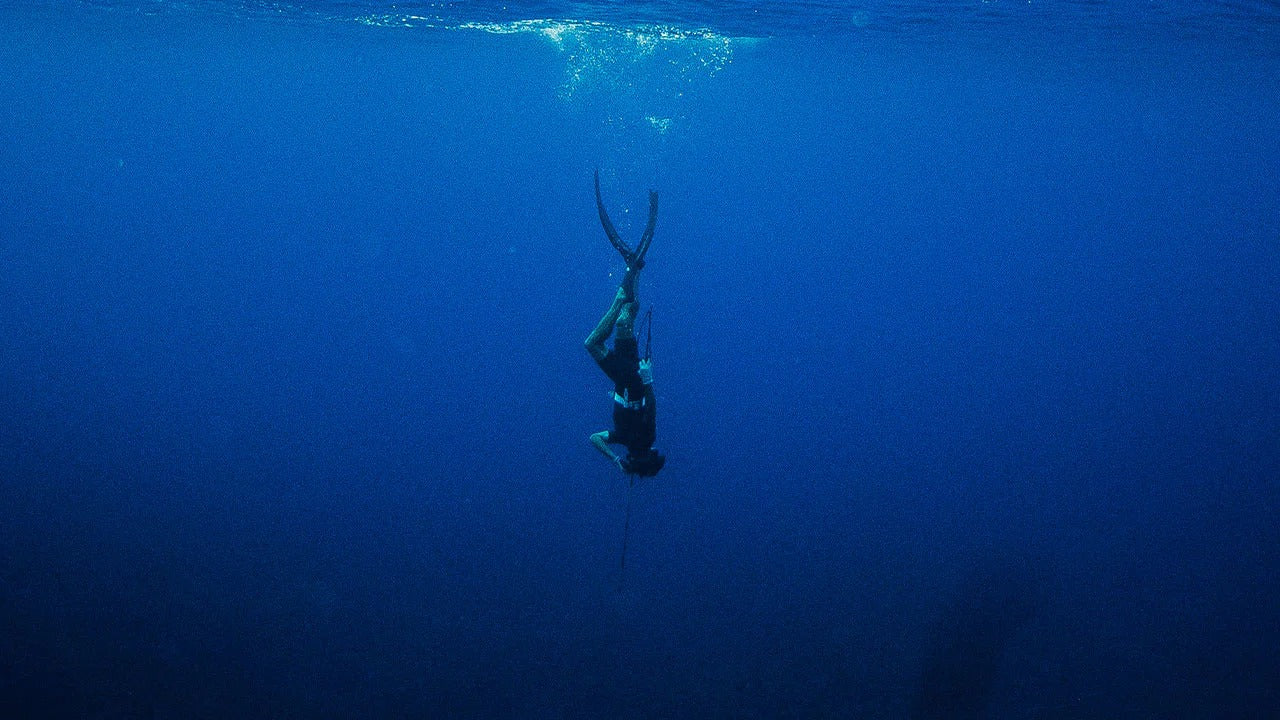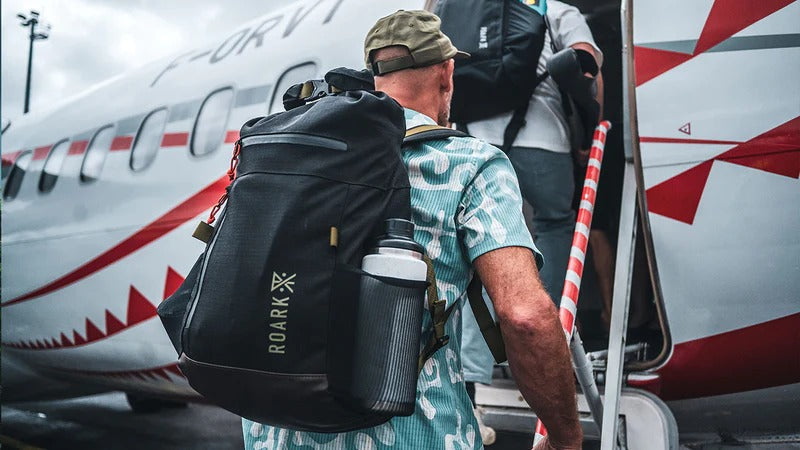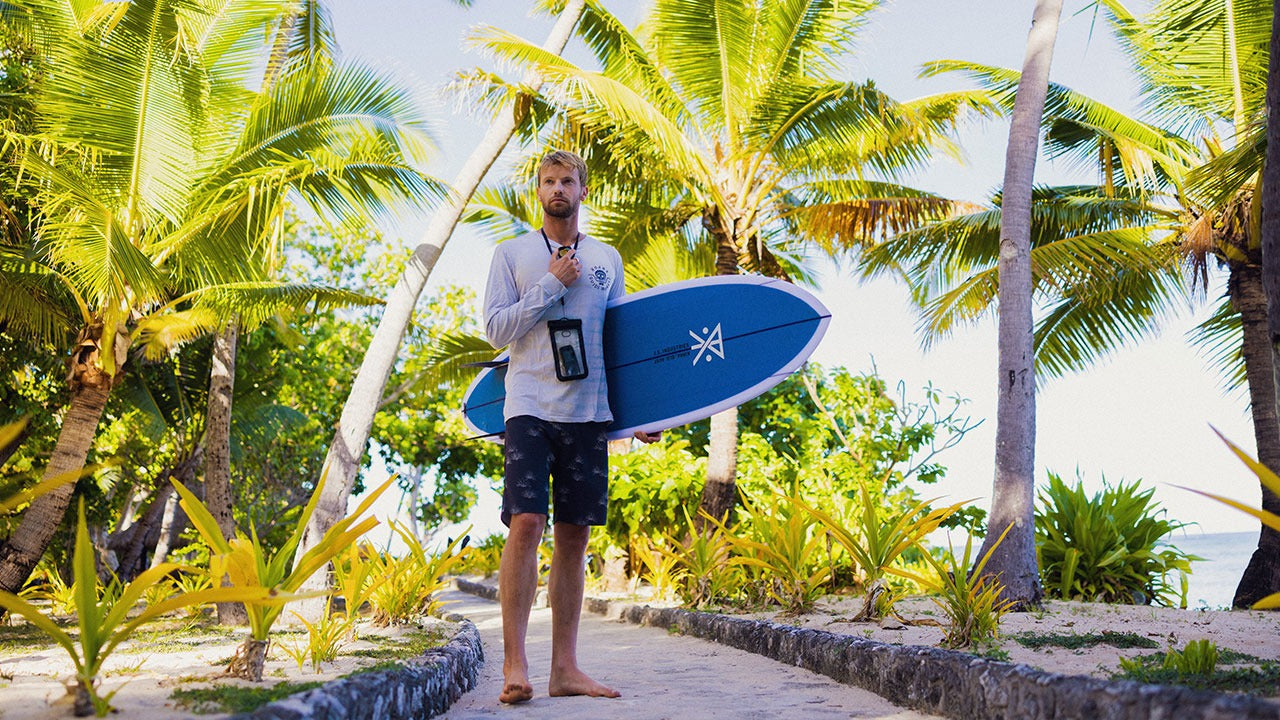
Beyond Sustainable: Kamoka Pearl Farms by Jeff Johnson

Kamoka Pearl Farms is a pearl farming company based in the remote atolls of French Polynesia. The company has gained international recognition for producing some of the world's most beautiful pearls while implementing sustainable and eco-friendly practices. According to a recent study by Dr. Kent Carpenter, Kamoka's farming techniques have actually increased the fish population in their lagoon. In addition to the positive impact below the surface, above the surface the farm is powered by wind and solar sources to reduce its reliance on the local power grid, and their fresh water is supplied by rainwater catch systems. With their dedication to sustainability and social responsibility, Kamoka Pearl Farms sets an inspiring example for the pearl industry, promoting responsible and ethical practices.

Words by Jeff Johnson
We landed on what looked like an uninhabited scar of sand and in the middle of the south Pacific. Situated just north of Tahiti, Ahe is one of seventy-five, tiny atolls in the Tuamotu archipelago. My friend Josh Humbert greeted us at the airstrip wearing no shirt and no shoes—only boardshorts and a black pearl necklace. Aside from the small tuffs or grey hair behind his ears, there was no sign of the 20 years that had passed since we’d last seen each other. He was bright-eyed, sun tanned, super fit and ageless. The contrast of our pasty figures covered in jeans and sweat-drenched shirts was more than evident as we loaded our gear into his tinnie boat.


I had spent time working on Josh’s pearl farm back in 2003. I came down here with Patagonia Inc. founder, Yvon Chouinard. It was our first trip together. We had decided to come down a week before a surf trip and work for our room and board. For a week, Yvon and I lived in a plywood shack diving ever day with Josh and his crew.
Josh told me I’d appreciate the fact that not much has changed at Kamoka Farms. “Even the tinnie,” he said, slapping the aluminum hull as we careened through the wind chop, “is the same boat as before.”

On the way to the farm we diverted to the reef pass to “get dinner” as Josh put it. He tossed the anchor as we fiddled with our bags and gear, then he was gone. One by one we threw our ourselves overboard. The warm, dark blue ocean felt like silk on my skin as I hovered about midway down. We were in about 30 feet of water. Everyone was scattered about, floating like skydivers in a translucent, liquid sky. Josh was laying patiently on the bottom, motionless, focused on the hunt.

The next day began in the dark. We had a quick coffee and a light breakfast while the sun sent its first rays into golden, puffy clouds. The oysters live out in the deepest part of the lagoon. They hang on lines strung from buoys, 30 feet below the surface, where the sunlight, temperature and currents are ideal. Over time, in this deep-water habitat, they collect a layer of barnacles on their shells. They need to be transported periodically to shallow waters so the little fish can clean them. This would be our job.

Josh’s way of teaching is somewhat stoic. He doesn’t say much. He just does his thing and you learn by watching, and by doing. You either figure it out or you’re left behind. Luckily, everyone caught on quickly. You dive down about 20-feet, untie two lines of oysters, one in each hand, and swim to the surface to the tinnie. You do not want to drop one or you could be losing hundreds, if not thousands of dollars-worth of pearls. It is some of the most gratifying manual labor I have ever done. It’s a perfect combination of strength, skill, and endurance. Doing this over and over all day, it becomes meditative: hover, breath, dive, surface; hover breath, dive surface….
It is some of the most gratifying manual labor I have ever done. It’s a perfect combination of strength, skill, and endurance.


On our last day Josh let us sort through some of the inventory. We all found pearls of varying shades and sizes—lasting mementos from our efforts. But I failed to find one to my liking. Back in the tinnie on the way to the airport, Josh slowed down in the middle of the lagoon to an idle. He loosened his pearl necklace from around his neck and handed it to me. I was speechless. “Really?” I asked. “Yeah,” Josh said smiling, “Its yours.”

About the Author
Jeff Johnson grew up in Danville, California, and moved to Hawaii when he turned 18. He lived on the North Shore of Oahu for fifteen years where he traveled extensively; writing and taking photographs. His stories and photographs have appeared in The Wall Street Journal, The Surfer’s Journal, Alpinist, Surfer magazine, Climbing magazine, and Outside magazine. The Surfer's Journal describes him as, "a piece of true grit,” and someone who, "doesn't back down when sketching the seamier side of the surf ghetto".
He has been part of the Roark family for many years and has explored the far reaches of the globe.










